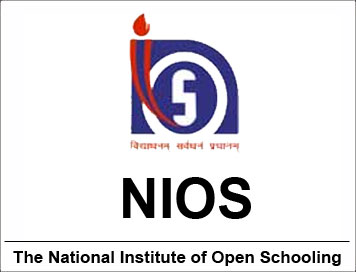(Notification) NIOS: Admission under the Sound Technician Course -2016
Disclaimer: This website is NOT associated with CBSE, for official website of CBSE visit - www.cbse.gov.in
(Notification) NIOS: Admission under the Sound Technician Course -2016
In the present employment scenario, an individual not only
needs skill to perform a particular type of work but also generic skills so as
to become employable. Various courses are offered
at National Institute of Open Schooling (NIOS) for secondary, senior secondary
and upto pre degree levels. The aim of Vocational Education at NIOS is primarily
directed towards arming the learners with the right knowledge & practical skills
to prepare students for gainful self/wage employment. The course on Sound
Technician is designed to enable the NIOS learner understand the basic concepts
of Sound, its Principles and Acoustics. This program has been designed keeping
in view the report of the Media and Entertainment Sector Skill Council which
suggests that most of the jobs in this industry are for technical assistants in
India. Sound Assistant in the Media & Entertainment Industry is also known as a
Sound Technician or Boom operator. The programme guide includes the objectives
of the program along with transactional and assessment strategies . It also
enlists the scope and various job opportunities available to learners after
passing this course.
Number of seats per batch: 20
Educational Qualification:
10th Pass with Maths and Science .
Minimum Age:
The cut off date are also applicable for age criteria. This means that the minimum age of candidate should be 15 years.
Fee:
The amount of admission fee payable for the course is Rs. 25000/-. Admission fee payable includes charges for registration, Identity Card, cost of study material, contact classes, practical training etc. The Admission fee should be paid to the Regional centre, Delhi either in cash or through a Bank Draft drawn in favour of Secretary , NIOS payable at Noida.
Syllabus:
L-1 Introduction: Introduction to sound, Nature of sound, Characteristics of Sound: Amplitude, wavelength, time period frequency, speed or velocity ; Principles of sound Propagation, Refraction, reflection, transmission, absorption of sound.
L-2 Measurement of Sound: Units of sound i.e. decibels
and their usage, dynamic range, sound pressure level (SPL)
L-3 Fundamentals of Sound technology: Analog & digital signals,
Converters- converting analog to digital, vice versa
L-4 Studio Acoustics: Meaning of acoustics, need of acoustics, factors
governing studio and control room acoustics - acoustics isolation, symmetry in
design, reflection, absorption, reverberation Cost factors; Phenomenon of Sound
propagation: refraction noise level basics of psychoacoustics - sound
transmission, threshold of hearing and pain
L-5 Audio Electronics: Voltage, current, Interference, earthing connection and problems, carry out adjustments.
National Occupational Standard : Setting up, Maintaining & Disassembling Sound Equipments
L-6 Microphones - Definition of microphones,
Classification of microphones based on transducer types and polar pattern, use
of microphones, Key considerations while selecting
microphones.
L-7 Loudspeakers - Types of loudspeakers - Active & Passive, Classification and classification of headphones such as ear bud head phones, on ear headphones, over the ear headphones
L-8 Other Sound Equipments: Amplifiers & their types ; recording and playback equipment-Audio recorders: DAT, Tape recorder, Hard Disk Recorder, Sound Cards, Digital Audio Workstation and related software
L-9 Audio Consoles : Types - Analog, Digital, Purpose, Block diagram (I/O signal path), features, facilities, Visual and Aural metering
L-10 Installing & Disassembling Sound Equipments: Audio Chain: Operating and Managing Sound equipments, requirement of power for sound, placements of power fitting and techniques of safe testing of sound equipments - sound checks
National Occupational Standard : Maintenance of Workplace Health & Safety
L-11 Health & Safety : General safety provisions, sound studio safety, studio hardware and software protection; Safety Measures while working with electronics mains equipment, - do’sand dont’s.
National Occupational Standard : Recording and Capturing Sound\
L-12 Recording & Capturing Sound : Production Types- Indoor, Outdoor, Speech, Music, Live Music ; Qualities of professional sound recording - Concept of frequency response distortion, noise, signal to noise ratio (SNR), dynamic range etc.
Admission Procedure:
Application for admission must be made in the prescribed form in duplicate given in Appendix ‘B’. The application form may also be downloaded from NIOS website at www.nios.ac.in . Please read carefully the instructions given in Appendix ‘B’ before filling in the Application Form. The filled in Application Form along with relevant documents and the requisite fee should be submitted to the Regional Centre Delhi . Application Form will not be accepted by NIOS directly either at its counter or by post.
Important dates:
-
Session starts from : 1.04.2016
-
Last date of receiving applications : 15.03.2016
Click Here for Official Notification
Courtesy: nios
